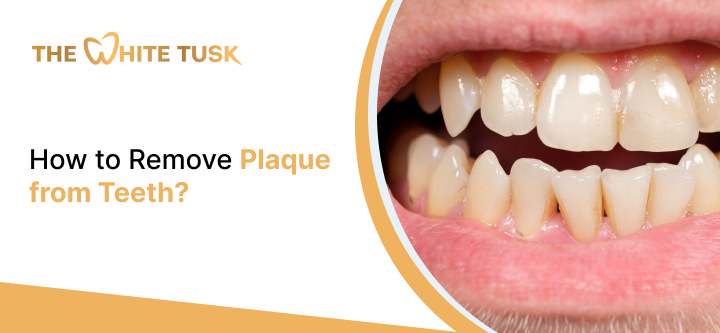
Maintaining good oral hygiene is essential for a healthy smile, and one of the most common issues people face is plaque buildup on their teeth. This sticky film of bacteria can lead to tooth decay and gum disease if not addressed promptly. In this blog, we’ll explore effective methods to remove plaque from teeth, preventive measures, and the importance of regular dental visits.
Plaque is a soft, sticky substance made up of bacteria, food particles, and saliva that forms on teeth. If not removed, plaque hardens into tartar, which can only be removed by a dental professional. Regular brushing and flossing are essential to controlling plaque and maintaining oral health.
Recognizing the signs of plaque buildup is crucial for maintaining oral hygiene. Common indicators include:

Brushing your teeth is the most effective way to remove plaque. Here are some effective brushing tips

Many people skip flossing, an essential step that helps remove plaque and food particles from between teeth that a toothbrush can’t reach.

Mouthwash can be a valuable enhancement to your oral care routine. Look for an antimicrobial or antibacterial mouthwash that helps reduce plaque and kill bacteria.

Your diet greatly impacts your oral health, and some foods can help minimise plaque buildup.

Visiting your dentist regularly is crucial for maintaining oral health and removing plaque.
Removing plaque from your teeth is essential for maintaining a healthy smile and preventing dental issues like cavities and gum disease. By following a consistent oral hygiene routine that includes proper brushing, daily flossing, and regular dental checkups, you can effectively manage plaque buildup. Remember to pay attention to your diet and consider using mouthwash as part of your routine.
Incorporating these practices into your daily life will improve your oral health and give you a brighter, healthier smile. Please don’t underestimate the importance of plaque removal; it’s a small but significant step toward overall dental wellness.
Hardened plaque, or tartar, can only be removed effectively by a dental professional during a cleaning.
While some plaque can be removed at home with brushing and flossing, hardened plaque requires professional cleaning.
Scraping plaque off your teeth at home is not recommended, as it can damage your enamel and gums.
Tartar removal can cause some discomfort, but it is generally not painful, especially with professional care.
You can use baking soda, oil pulling, and maintaining good oral hygiene to help reduce plaque naturally at home.
While complete removal isn't possible in five minutes, brushing and flossing can quickly reduce plaque buildup.
Salt can help reduce bacteria and improve oral health but is not adequate for removing hardened plaque.
Yes, tartar can harbour bacteria that contribute to bad breath if not removed regularly.